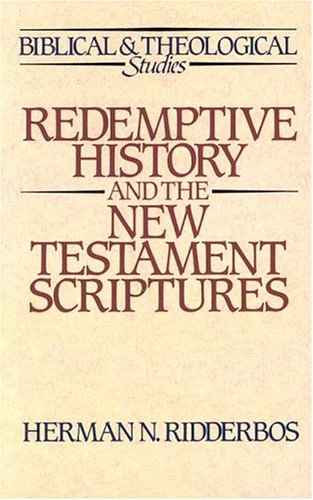
Ridderbos, Herman N. Redemptive History and the New Testament Scriptures
. Translated by H. De Jongste. Revised by Richard B. Gaffin, Jr. Phillipsburg, N.J.: P&R, 1988.
This book is a classic and deserves to be read still today for the topics of canon, apostleship, authority, and redemptive history.
Ridderbos, writing during a time dominated by existentialist interpretation, subjectivist hermeneutics, and canonical turmoil sought to establish a connection between the NT Scriptures and redemptive history. General historical investigation cannot determine the canon; otherwise, something other than redemptive history and Scripture itself becomes the rule for what is included in the canon. Ridderbos skillfully shows the connection between the apostolic authority given by Jesus for the proclamation of historical events, which was eventually put down in writing over time as the apostolic age was coming to an end. These writings were invested with the same authority as the apostles’ spoken word and thus were canonical from the beginning. The church did not create the canon, the canon created the church.
The second part of the book fleshes out the various forms of NT teaching, namely, kerygma, witness, and teaching. Regarding the kerygma, Ridderbos rehearses the history of critical research, especially that of Martin Kähler, who made the popular distinction between the Christ of faith and the historical Jesus (50-58). He argues, contra Bultmann, that the factuality of the historical events behind the kerygma cannot be separated from the kerygma itself. “The kerygma stands or falls with the factuality of the historical events of which it is the proclamation. To say, then, that the New Testament kerygma is a claim that urges a decision and that the kerygma does not intend to increase our factual knowledge or to clarify our understanding creates a false antithesis” (55).
Witness is for those whom God has specially called to the task and is equivalent to apostleship (Acts 1:21, 22, 26; 1 Cor 15:9-11, 15; John 15:27). Ridderbos sees a sharp distinction between confession and bearing witness, in that confessing is a subset of bearing witness. “A witness is a redemptive-historical figure, appointed by Christ, to vouch on God’s and Christ’s behalf, in the great lawsuit against the human race, for the truth and reality of what God has said and done in Christ. For that purpose, Christ authorized and equipped witnesses in a special sense” (60).
Teaching is frequently coupled with preaching, and is therefore closely related (Matt 4:23; 9:35ff.; Acts 4:2; 5:42; 15:35; 28:31). Teaching, however, is often a reminder of what has already been proclaimed and involves the entire content of the gospel and redemptive facts of history (69-70). It sometimes takes on an ethical dimension and in Acts, Paul, and especially the pastoral Epistles, “teaching acquires in general the significance of instruction in the Christian.”
This work may not be as significant now as it was during Ridderbos’ era when Bultmann was demythologizing and the historical Jesus quest was more popular than today. But this work still has abiding significance in its unique attempt to formulate a relationship between redemptive history and the canon, which is done quite persuasively by Ridderbos.
Find it here on Amazon.
